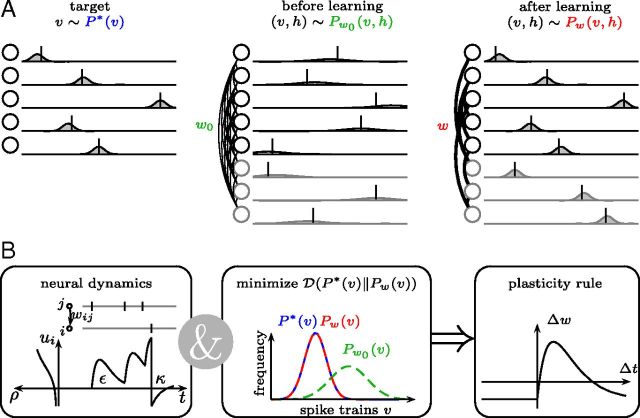Figure 1.
Task and model description. A, Left, Stimuli-evoked activity patterns v (ticks) with probabilities given by a target distribution P*(v) (curves). Middle, In the absence of stimuli the network spontaneously generates activity patterns x = (v, h) distributed according to a model distribution Pw0 (x) with synaptic strength parameters w0. Right, With learning, the distribution of spontaneous activity patterns Pw(v) approaches the target distribution. Hidden neurons (in gray) help to support the desired activity patterns in the visible neurons. B, Neural dynamics define the model distribution Pw(x) trough a spike response kernel ε, an adaptation kernel κ, and the spike probability ρ. Minimizing the divergence  (P*(v)‖Pw(v)) from the target to the model distribution leads to a plasticity rule for the synaptic strengths w that is matched to the recall dynamics.
(P*(v)‖Pw(v)) from the target to the model distribution leads to a plasticity rule for the synaptic strengths w that is matched to the recall dynamics.

